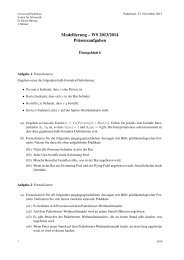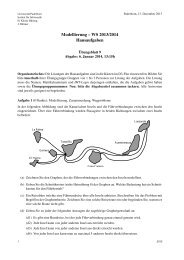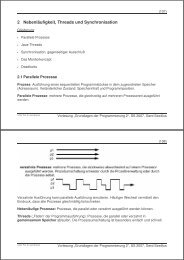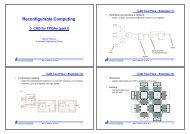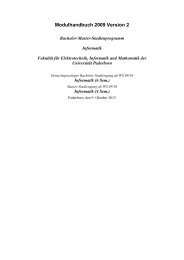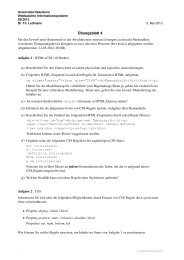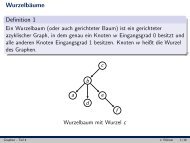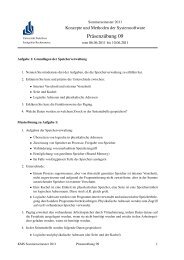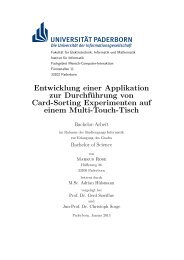User Modeling human-computer interaction
User Modeling human-computer interaction
User Modeling human-computer interaction
You also want an ePaper? Increase the reach of your titles
YUMPU automatically turns print PDFs into web optimized ePapers that Google loves.
Figure 1: internal view of the BGP-MS shell-system (from [Bla96])<br />
KN-IPCMS The KoNstanz Inter-Process Communication Management System (KN-<br />
IPCMS) is a platform-independent, message-oriented communication protocol which is<br />
used to communicate between an application and the BGP-MS shell system. In figure<br />
2 we have three types of communication.<br />
1. If the application wants to tell the shell system about an observed believe or goal<br />
of a user, it can send an bgp-ms-tell message to the shell.<br />
2. The message type d-act is used to tell the shell system about an action that a<br />
user has performed in the application.<br />
3. Assumptions about a user are an important information for an application, so the<br />
application can request such an assumption with a bgp-ms-ask message send to<br />
the shell system, and the BGP-MS can send the answer in an bgp-ms-answer<br />
message to the application.<br />
Below the arrows we can see the messages which are described in the belief, goal, plan<br />
language (BGPL). As we take a look at the d-act message, we can interprete it, that the<br />
print command is executed on the user documentation. If you want more information<br />
about other types of messages you will find it in [KP95].<br />
6





